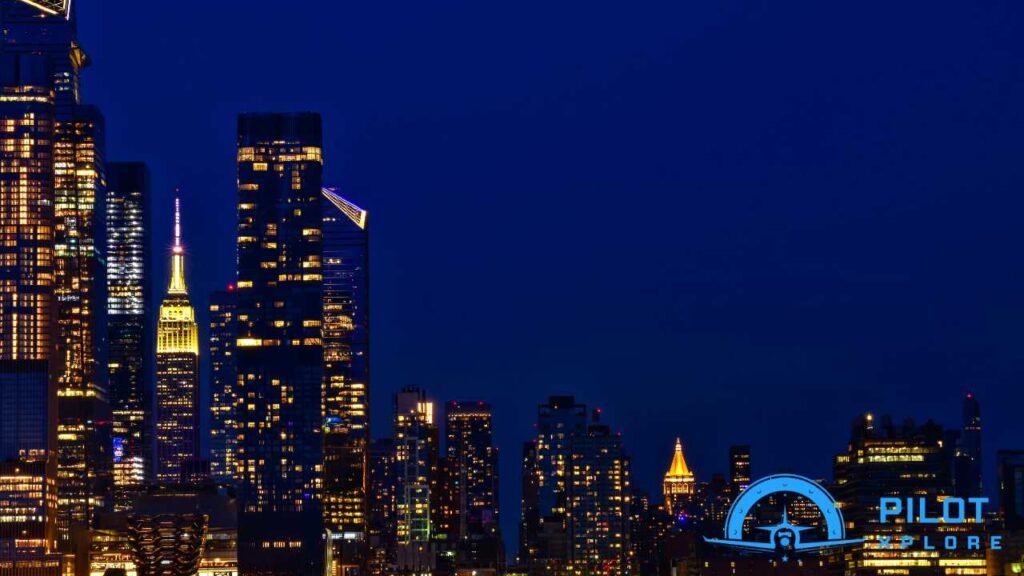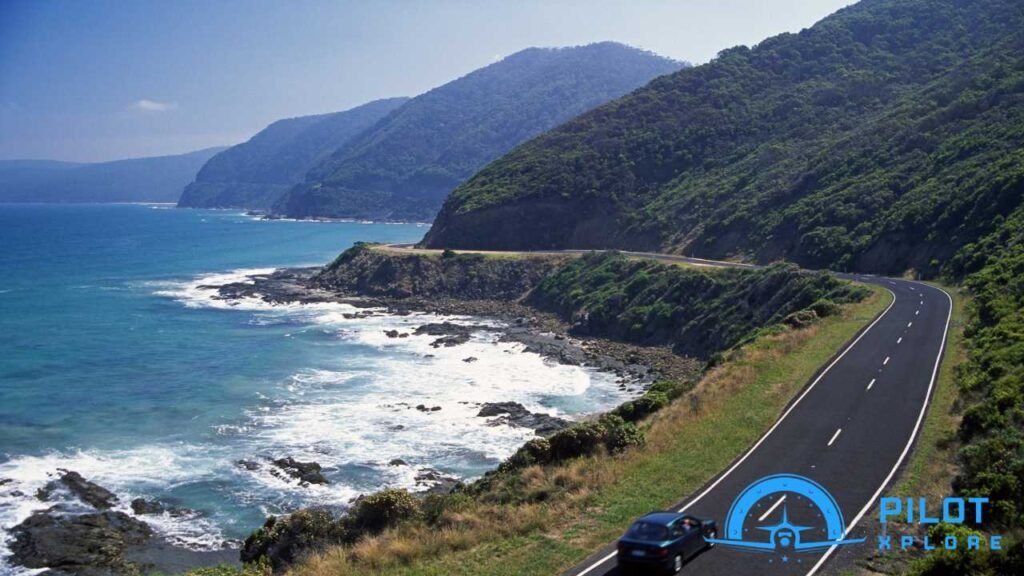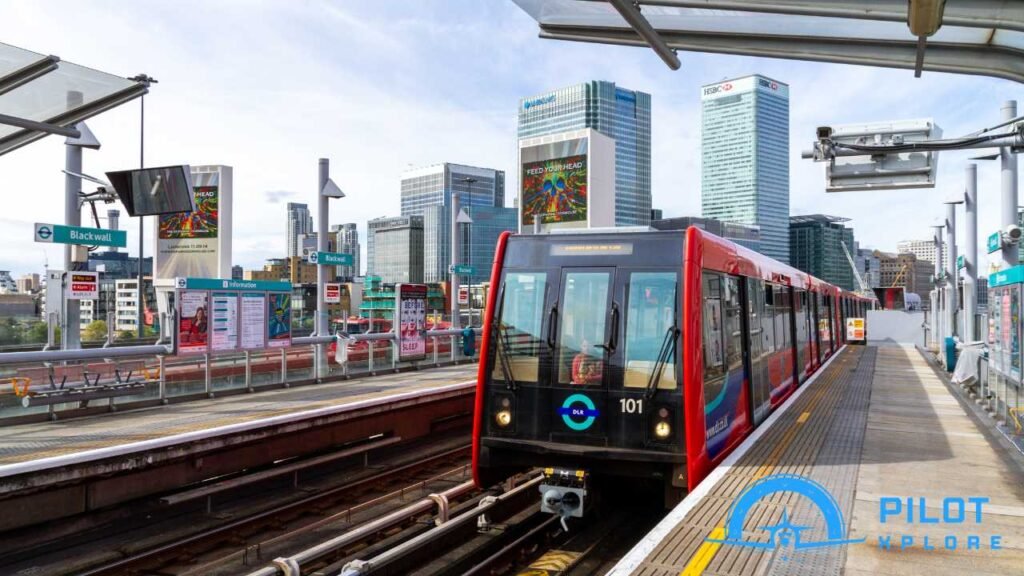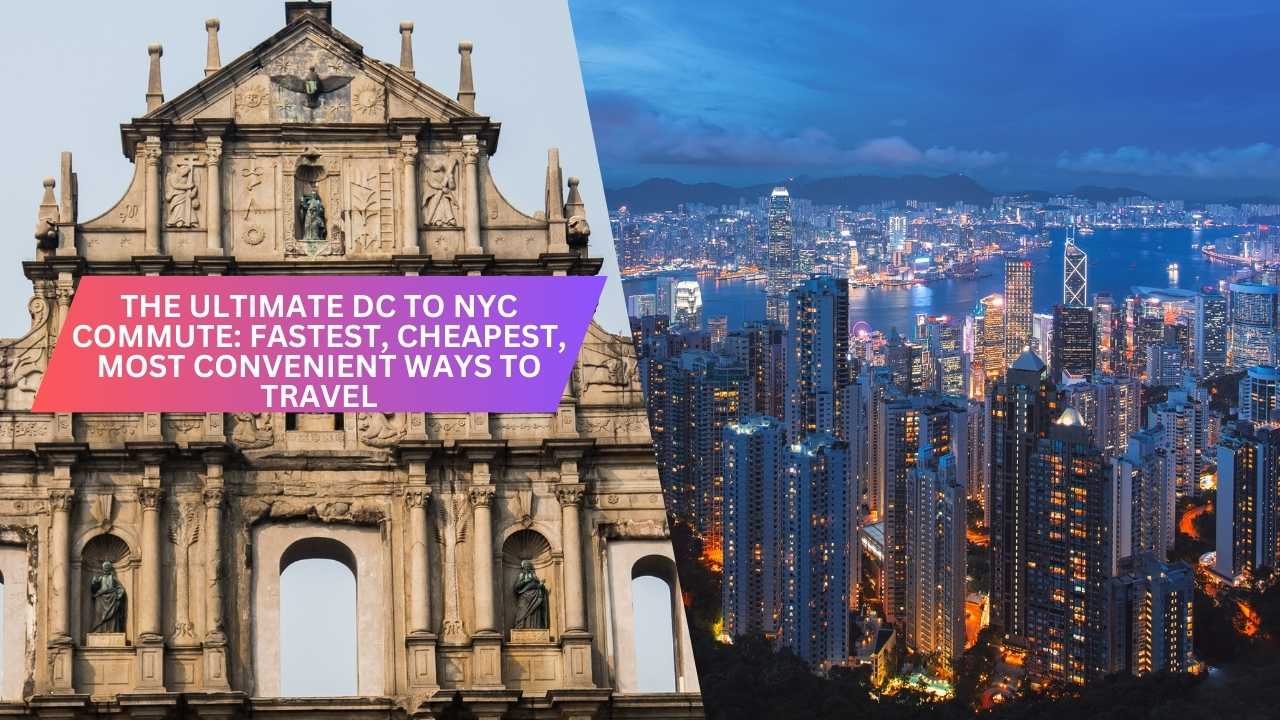As a New York City based pilot living in the Washington DC metro, I know firsthand the predicament of trying to figure out how to commute from Washington DC to New York City as efficiently as possible. Every time I think about the daily grind of commuting, I’m confronted with the fastest, cheapest, and most convenient options.
The answer to this challenge may not be what you expect, and it often comes as a surprise to many commuters who don’t fully explore the variety of choices available. Whether it’s time, cost, or comfort, there are multiple ways to make the journey, and every option has its own benefits depending on your preferences and priorities.
But as someone who’s experienced the ups and downs of this commute, finding a balance between commute efficiency and practicality is key. Let’s break down the best options.
Commuting to NYC: A Challenging Journey
Commuting from Washington DC to New York City can be a real challenge, especially if you’re someone like me who often needs to make it to business meetings, conventions, or special events. Whether you’re traveling for fun or work, a smooth commute is crucial, but sometimes it’s easier said than done.
After years of commuting, I’ve tried all kinds of methods—buses, trains, ubers, driving, and of course, flying by plane or helicopter. Each option has its pros and cons, and I’ve missed only one commute so far. If you’re new to the commute or struggling with endless frustrations, you’re not alone.
I’ve spent long nights trying to figure out the best commute plans, especially during Covid-19 when bus routes, trains, and flights were nonexistent. The ultimate commute often depends on your needs—whether you want to fly or drive—and how quickly you need to get to downtown Manhattan or any of New York City’s 3 airports for an assigned flight.
| Mode of Transportation | Speed | Cost | Convenience | Average Duration |
| Flying (DCA to LGA) | Fastest | Moderate | Medium | 1 hour 25 minutes |
| Floatplane (Tailwind) | Moderate | Moderate-High | High | 90 minutes |
| Driving | Moderate | High (due to gas, tolls, and parking) | High | 4-5 hours |
| Amtrak/Acela | Moderate | Moderate-High | High | 3h 20m |
| Bus | Slow | Low | Low | 4-5 hours |
Which is the Best Way to Travel from DC to NYC?
When deciding between flying, driving, or taking a bus or train from DC to New York City, the best choice depends on your priorities like cost, speed, and convenience. If you’re looking for the fastest option, flying is often the way to go, especially if you’re catching a flight from Washington Reagan Airport (DCA).
But, don’t forget, weather can impact flights, and delays are common. If you want something more affordable, a bus or train might be better, though they can take longer and are not always the most reliable. Driving gives you flexibility but requires handling traffic and finding parking.
There’s also a new contender: floatplanes, which offer a unique way to travel but may not always be the most consistent option. No matter your choice, it’s important to think about your specific commuting needs and the ultimate balance of time and money.
And if you’re stuck with a layover at DCA, consider making the most of your 4-6 hour layover to explore the area before continuing your journey.

Flying from DCA to LGA: The Fastest Option
Flying from DCA to LGA is often the fastest way to reach New York City. While flights are typically scheduled for about 1 hour and 25 minutes, they usually take under an hour about 80% of the time, making this a convenient choice for travelers in a hurry.
The aircraft used on this route generally have a 2×2 seating layout, so there’s no middle seat to worry about—making the trip more comfortable. Still, weather-related delays can occur, especially when New York’s busy airspace is affected by poor conditions.
Even when delays happen, they’re typically less than an hour. However, disruptions may also impact trains, buses, and road traffic. If your flight is delayed, consider standing by for an earlier one—you might get lucky and arrive on time or even ahead of schedule.
Advantages of Flying to NYC
- Quickest way to get to NYC, with transit time often being under one hour.
- Enjoy complimentary beverages like coffee, beer, and wine while you fly.
- Access free Wi-Fi when you’re above 10,000 feet, making it easy to work or relax.
- Boarding can happen as soon as 5 minutes before departure, allowing for a smooth and stress-free start to your journey.
Challenges of Flying to NYC
- Flight availability is limited to 15-20 flights per day, especially on weekends.
- Weather delays and crowded TSA PreCheck lines can disrupt your typical commute.
Flying to NYC can be fast, but it does come with some downsides. If CLEAR1 is part of your typical commute, you’ll avoid the often crowded TSA PreCheck lines, but you might still face delays. As a pilot, I can tell you that even with CLEAR, long lines at security are not uncommon. If you end up laying over near JFK, it can be hard to find the best hotels near the airport, making the journey even more inconvenient.
| Benefit | Details |
| Quickest route | Flight duration often under 1 hour |
| Complimentary beverages | Enjoy coffee, beer, and wine onboard |
| Free Wi-Fi | Available once above 10,000 feet |
| Stress-free boarding | Can board 5 minutes before departure |

Discover a Fast, Unique Way to Fly from DC to NYC
A fresh, exciting, and convenient travel option is now available for commuting between DC and NYC: floatplanes. Tailwind Air offers direct seaplane flights from Manhattan’s East 23rd Street to Washington-Dulles, providing a unique alternative to traditional travel methods.
These flights take about 90 minutes and offer stunning aerial views of the Mid-Atlantic region, passing over cities like Philadelphia and Boston. Pricing is comparable to standard Amtrak fares, making it a competitive and time-saving option.
Operating once or twice on weekdays, this service offers a dependable and enjoyable travel experience. While floatplanes have a long history along the Eastern Seaboard, this modern service brings a fresh twist to regional travel for those seeking something different.
Advantages of Choosing Floatplanes for DC–NYC Travel
- Taking a floatplane from DC to NYC offers super convenient direct drop off at E 23rd St in Manhattan, making it easy for commuters working in Northern Virginia to travel quickly with minimal hassle.
- You can simply show up 10 minutes before departure, making the commute much faster and time-saving compared to other methods of transportation.
- The travel time is significantly reduced, providing an efficient and quick way to reach NYC, with a short wait and the ease of proximity to the airport and drop-off locations.
Considerations Before Choosing Floatplane Travel
- One or two flights per day limits flexibility, which may not fit your schedule.
- Prices are higher than for normal flights, making it a more expensive choice.
- There is no service from December to March, so it’s only available for part of the year.
- Flights take 90 minutes, which is longer than a direct flight but still relatively fast.
The Convenience of Driving from DC to NYC
When it comes to the most convenient way to travel from DC to NYC, driving often stands out. It offers the flexibility of quicker, door-to-door travel, especially when schedules don’t line up or if you’re looking for more freedom. But let’s be honest—driving from DC to NYC can be a bit of a headache when things go wrong.
From dealing with traffic jams to unforeseen delays, things can spiral quickly. One of the major drawbacks of driving is the hidden expenses, such as fuel, tolls, and parking. Getting into New York can be quite expensive, especially when you factor in insane parking fees that can skyrocket your total cost.
You could easily end up paying around $55 each way in gas and tolls alone. And that’s not even counting the outrageous parking costs once you arrive. In fact, by the time you add up all the expenses, you might find that other ways, like flying, become surprisingly more affordable than expected.
So, while driving can be a convenient option, it often ends up being more costly than anticipated.
Advantages of Driving from DC to NYC
- Driving is the most convenient option when there’s no public transportation necessary and you need to be on your own schedule.
- It’s often the quickest, door-to-door option, saving time especially when you’re in a rush.
- You won’t have to worry about missing your ride or being stuck waiting for a train or bus, even if you’re running late—just hop in your car and go.
Drawbacks of Driving from DC to NYC
- The costs of tolls, gas, maintenance, insurance, and parking can add up quickly when driving from DC to NYC.
- You’ll often face unpredictable and slow traffic, causing unnecessary delays and stress while driving.
- There’s always the possibility of breakdowns or potholes, which can lead to frustrating issues like flats—trust me, I’ve had 3 on my trips to/from NYC.

A Balanced Option: Acela and Amtrak Trains from Union Station (DC) to Penn Station (NYC)
Traveling by Acela or Amtrak from Union Station in DC to Penn Station in NYC strikes a solid balance between cost, travel time, and comfort. It’s usually the second quickest option after flying, with the added flexibility of earlier and later departure times compared to most flights.
Ticket prices can be quite affordable, starting around $39 for non-refundable fares, though they can rise significantly during peak hours or with last-minute bookings.
Unlike air travel, which involves navigating busy airports like Reagan National (DCA) or LaGuardia (LGA), Amtrak offers a smoother, more direct journey—getting you from downtown DC to the heart of Manhattan without the hassle of airport security.
Advantages of Traveling by Acela and Amtrak from DC to NYC
- Traveling from DC to NYC with Acela or Amtrak is convenient, offering a duration of 3h20m that’s quicker than driving and avoids the higher costs of rideshare or taxi services. The trains are centrally located at major stations, making access to both cities easy and saving time and money.
- While the trip may be slower than flying, it offers an affordable and convenient alternative, with the ability to relax during your commute and avoid the stress of driving or dealing with additional fees. The stations in both DC and NYC help make the commute smoother, reducing extra travel costs after arrival.
Potential Drawbacks of Acela and Amtrak DC-NYC Service
- While the Acela and Amtrak provide a convenient way to commute, there are some downsides to keep in mind. Trains can sometimes experience a breakdown enroute or face track delays, which can lead to an uncomfortable and frustrating ride. Additionally, the ride may be noisy, wobbly, and uncomfortable, making it less ideal for passengers who prioritize a smooth, quiet journey.
- Even with the fastest and cheapest options, these delays and discomforts can affect the overall experience. If you’re in a hurry, the possibility of a track issue or breakdown might make the trip feel even longer than anticipated.
| Benefit | Downside |
| Flexibility | High cost of gas, tolls, and parking |
| Door-to-door convenience | Traffic delays can be frustrating |
| No need for public transportation | Risk of breakdowns or road issues |

Most Affordable but Slowest: Taking a Bus from DC to NYC
If you’re looking for the cheapest way to commute from DC to NYC, buses are often the go-to option. They are the most affordable, but also the slowest, making it a trade-off for those on a budget. Buses are convenient because they drop you off right in downtown New York City, but they come with some downsides.
The ride can be uncomfortable, especially if you have motion sickness, and although most buses offer WiFi, it’s almost always too slow to be useful. The boarding process can be a mess and, at times, unnerving, and buses are often late, likely due to traffic.
In my experience, I’ve found buses to be the least reliable form of transportation between these cities, though they certainly have their place for those who prioritize savings over convenience.
Advantages of Traveling by Bus from DC to NYC
- Taking a bus is the cheapest way to travel from DC to NYC, typically going from downtown DC to downtown Manhattan, making it a cost-effective choice for budget-conscious travelers.
- The bus offers a convenient and direct route, allowing passengers to avoid extra travel to and from stations, with downtown locations in both cities adding to its appeal
Drawbacks of Taking the Bus from DC to NYC
- One downside of taking a bus from DC to NYC is that it can be a rough ride. The journey might not be as comfortable as other options, and the ride quality can vary.
- The schedules for buses are not great, and they are often tardy, meaning you may face delays and uncertainty when planning your trip.
Additionally, service fees are often added to reservations, which can increase the total cost of your trip, making it slightly more expensive than expected.

Flexible Commuting: Private Car Services & Carpooling Apps
If you prefer a more personalized and flexible commute, private car services like Uber, Lyft, or even carpooling apps like Lyft Line offer another option. These services provide door-to-door convenience without the hassle of public transportation.
They are especially useful for commuters who have irregular schedules or need to get to specific locations not easily accessible by other means. However, the main drawbacks are cost and the potential for unpredictable traffic.
During rush hours, the fares can skyrocket, making it a less affordable option for frequent travelers.
How Seasonal Changes and Traffic Affect Your Commute
Commuting from DC to NYC is highly dependent on the time of year. During peak travel seasons like holidays or summer weekends, the roads become congested, and both buses and cars experience significant delays. Moreover, extreme weather conditions such as snowstorms or heavy rain can slow down trains and flights
It’s crucial to consider the time of year when planning your trip to avoid unexpected delays. For example, flights may be affected by bad weather, and buses could get stuck in traffic. The key is to plan ahead and allow for extra time when traveling during these peak seasons.
Best Booking Tips: How to Get the Lowest Rates
When planning your commute, it’s essential to know when and how to book your transportation for the best rates. Flights and trains, for instance, are often cheaper if booked in advance, especially for Amtrak and Acela services.
Similarly, booking a flight early can help you avoid high last-minute prices. If you’re opting for a bus, looking for discounts or using apps like FlixBus can also provide cheaper fares. For those flying, consider using tools like Google Flights or Hopper to track price fluctuations and book when rates drop.
These booking tips can help you save money while securing a seat on your preferred commute method.
Where to Stay During Long Layovers: Airport Hotels & More
For those who find themselves with long layovers at airports like Reagan National (DCA) or JFK, it’s worth considering nearby accommodations to rest and recharge. Many airports offer budget hotels or lounges for passengers with extended waiting times.
If you’re in New York for a short period and need to kill time before your next flight, booking an airport hotel can be a convenient option, especially if you want to freshen up. Researching and booking hotels with transit shuttle services or close proximity to transportation hubs can make these layovers more bearable.
Frequently Asked Questions
What’s the quickest way to travel from DC to NYC?
Flying from DCA to LGA is the fastest option, typically taking 1 hour and 25 minutes, with many flights completing the journey in under an hour.
Is taking a floatplane a dependable choice for commuting?
Floatplanes are a unique and efficient option, but they’re limited to one or two flights daily and are unavailable from December to March, which may affect flexibility.
What are the advantages of driving from DC to NYC?
Driving offers flexibility and convenience, allowing for direct travel on your own schedule, though it can be expensive due to gas, tolls, and parking costs.
How much does a bus trip from DC to NYC typically cost?
Buses are the most affordable travel option, though they are also the slowest. They’re ideal for those on a budget, but may take longer to reach NYC.
Is traveling by train (Amtrak or Acela) a good option?
Yes, Amtrak or Acela offers a good balance of speed, affordability, and comfort, with a travel time of around 3h 20m and convenient access to both cities.
What are the main drawbacks of flying from DC to NYC?
Although flying is quick, it has drawbacks, such as limited flights, potential weather delays, crowded TSA lines, and added time for check-in and security procedures.
What are the benefits of taking the Acela or Amtrak train?
Amtrak and Acela provide a comfortable, affordable alternative, with direct routes from Union Station to Penn Station in just 3h 20m, offering a hassle-free journey.
Can I rely on a floatplane for quick travel?
Floatplanes are a fast travel option, but with limited flights each day and no service from December to March, they might not always be available when needed.
What’s the most convenient way to get to NYC?
Driving is the most convenient as it offers door-to-door service and flexibility, though costs for gas, tolls, parking, and potential traffic delays can make it expensive.
How can I reduce the cost of commuting from DC to NYC?
To save money, book your transportation early, track flight prices with apps, and consider using discount services like FlixBus or cheaper Amtrak tickets for train travel.
Conclusion
To sum up, commuting between Washington DC and New York City presents several options, each with its own advantages and drawbacks. Whether you prioritize speed, cost, or convenience, there’s no single best choice. Flying is the quickest, while trains like Acela or Amtrak offer a good balance of comfort and efficiency.
Driving provides door-to-door convenience but can become expensive and stressful due to traffic and parking. Buses are the most budget-friendly but are also the slowest and least reliable. Floatplanes offer a unique, faster option but are less flexible due to limited availability.
Ultimately, the best travel method depends on your individual preferences, schedule, and budget, so planning ahead is key to ensuring a smooth and efficient trip

Stephanie Kiley, founder of PilotXplore, is a commercial pilot and Doctor of Education based in Connecticut. I shares expert aviation insights, travel tips, and airline reviews, making air travel easier for all. Passionate about flying and learning, she loves exploring new destinations and simplifying aviation for travelers.

